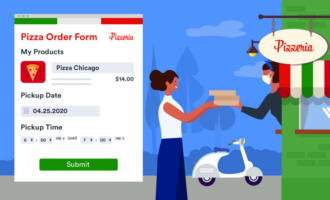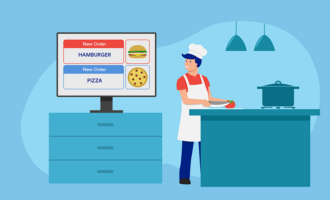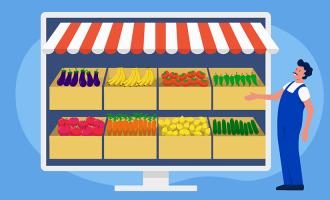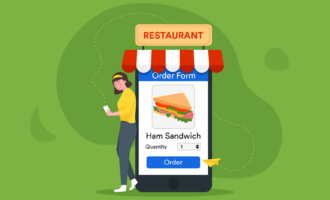Restaurant inventory management tips
- Design a spreadsheet to contain all inventory information
- Fill out the spreadsheet with your information
- Create a par inventory sheet
- Take inventory in person
- Create a consistent schedule for inventory management
- Delegate inventory duties to the same employees
- Keep track of when you receive new deliveries
Inventory management is a key practice that makes any food service business run more smoothly and efficiently. While there are many ways to keep inventory, either manually or through specialized software and spreadsheets, the goal is to keep everything in stock for your customers — while preventing food waste.
To successfully manage inventory, you must have a thorough understanding of how your individual restaurant operates. And the restaurant inventory management process can offer just that: a top-down view of all the business your restaurant does along with a thorough understanding of which products make your customers happy.
Anyone can successfully manage restaurant inventory by following just a few tips and tricks. Here’s some helpful information to keep in mind when you’re looking to get a handle on restaurant inventory management.
The basics of restaurant inventory management
Every business that sells a product must keep track of its inventory. For your restaurant, this includes all the food, drink, and equipment it takes to run the business. While this can vary depending on restaurant type, you can often group products by the following categories:
- Ingredients for everything on your menu (all food products)
- Alcoholic beverages
- Non-alcoholic beverages
- Kitchen equipment and dishware
- Towels, aprons, and uniforms
Restaurant inventory management keeps track of how much of each item your restaurant has either used or discarded. You can then use this information to order refills for each category, avoiding stockouts while limiting waste.
It was once common to manage inventory with a printed spreadsheet that was updated by hand. However, nowadays, you can take care of most inventory management digitally.
Digital restaurant inventory lists are not only easier to use, but you can also easily back them up. Plus, you won’t lose, misplace, or accidentally destroy them, and they’re readily accessible.
Benefits of restaurant inventory management
There are many benefits to maintaining solid inventory management practices for your restaurant, including
- Food waste prevention
- Lowered costs due to less food waste
- Happier customers who can rely on you to have their favorite items in stock
- Improved transparency and relationships with vendors
- Further insight into the overall running of your restaurant
- Increased product knowledge to predict trends and know what to order in the future
- Increased profits due to lower expenses
Even small restaurants spend upwards of 25 percent of their budget on food. Once you add the cost of labor, rent, and other overhead expenses, it’s easy to see why limiting your restaurant’s food waste is a wise business practice.
You can also use the insight restaurant inventory management provides you to put together specials and offers that will help you clear out inventory that might otherwise go stale. Knowing what you’ve got in your pantry is the best way to make new and exciting dishes while keeping your restaurant afloat.
Best practices to keep in mind
Each restaurant will have its own way of tracking inventory. However, everyone should follow these universal practices.
- Design a spreadsheet to contain all inventory information. This will help you define the inventory categories you’ll be keeping track of and function as a database to store that information. Free online spreadsheet-based database platforms like Jotform Tables can help make this a pain-free step with easily customizable templates.
- Fill out the spreadsheet with your current inventory information. First, determine the best process for taking inventory as well as who will be responsible for completing the task. Lay out a defined process for your business before moving on.
- Using this information, create a par inventory sheet. This sheet will tell you how much of a certain item you should have based on previous inventory counts. Knowing how much food and supplies you need for a standard month can help you make predictions for orders down the road or during special events like the holidays.
Mastering these basics will go a long way in helping you implement a restaurant inventory management process. Here are some more tips that will help you further refine your inventory practices.
- Take inventory in person. There’s only one way to be sure you have something in stock — and that’s for someone to see it with their own eyes.
- Create a consistent schedule for inventory management. Weekly inventory checks are a solid metric for tracking your product usage and disposal, and you’ll remember them if you schedule them for the same day and time every week.
- Delegate inventory duties to the same employee(s) regularly. You can also simply do it yourself. In either case, having the same person or group of people check inventory will help them improve their product knowledge and ensure they’re familiar with inventory protocols.
- Keep track of when you receive new food deliveries. Make sure everyone knows that the oldest food in the pantry needs to go out first (although it goes without saying that you should never use spoiled or rotten food).
Help for keeping track of inventory
If you’re looking for a home for all your inventory needs, Jotform Tables has more than a few spreadsheet templates to get you started. These templates are automatically populated by inventory forms that your employees can fill out on their phones as they take inventory. If you need a quick template to modify using your own inventory software, Jotform’s PDF inventory templates will do the trick.
Well-organized restaurant inventory can mean the difference between keeping your guests happy and driving away paying customers because you just don’t have the goods. In the end, consistent service will keep your customers coming back and your restaurant in the black.
Photo by Rachel Claire































Send Comment: